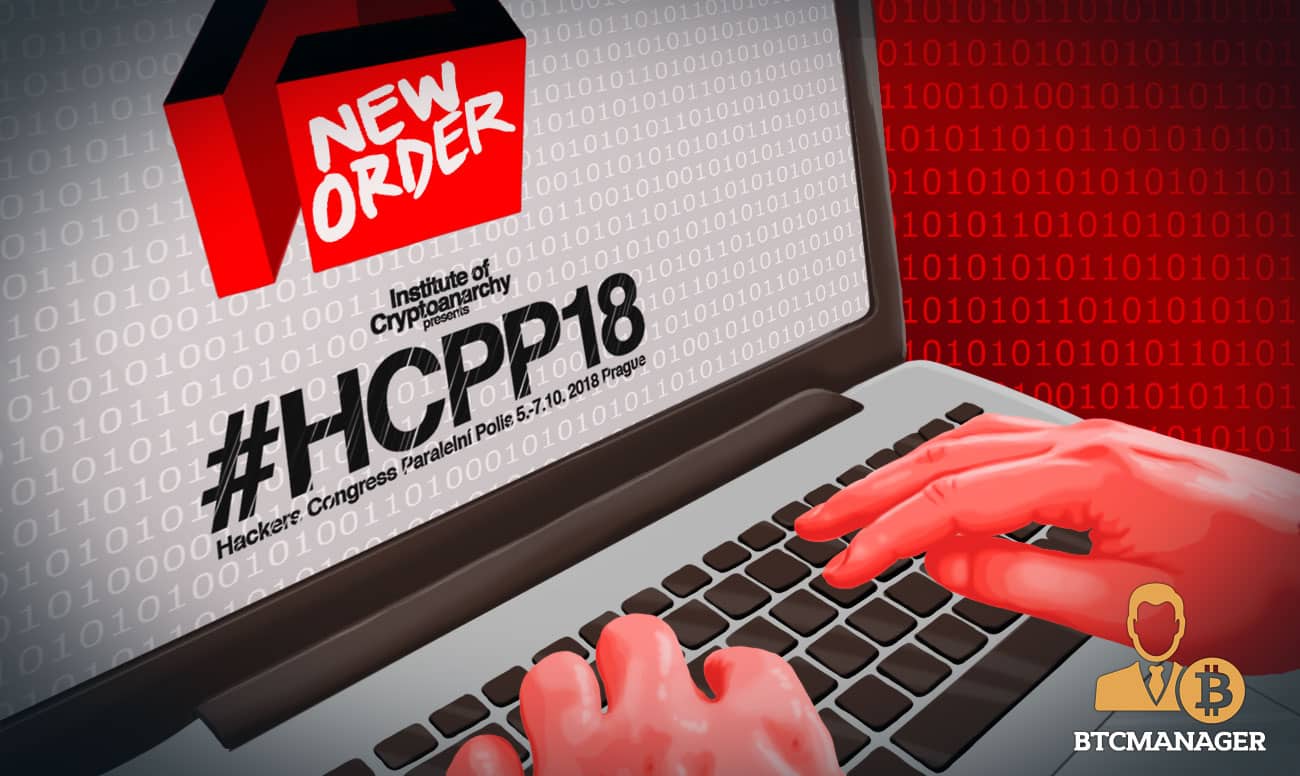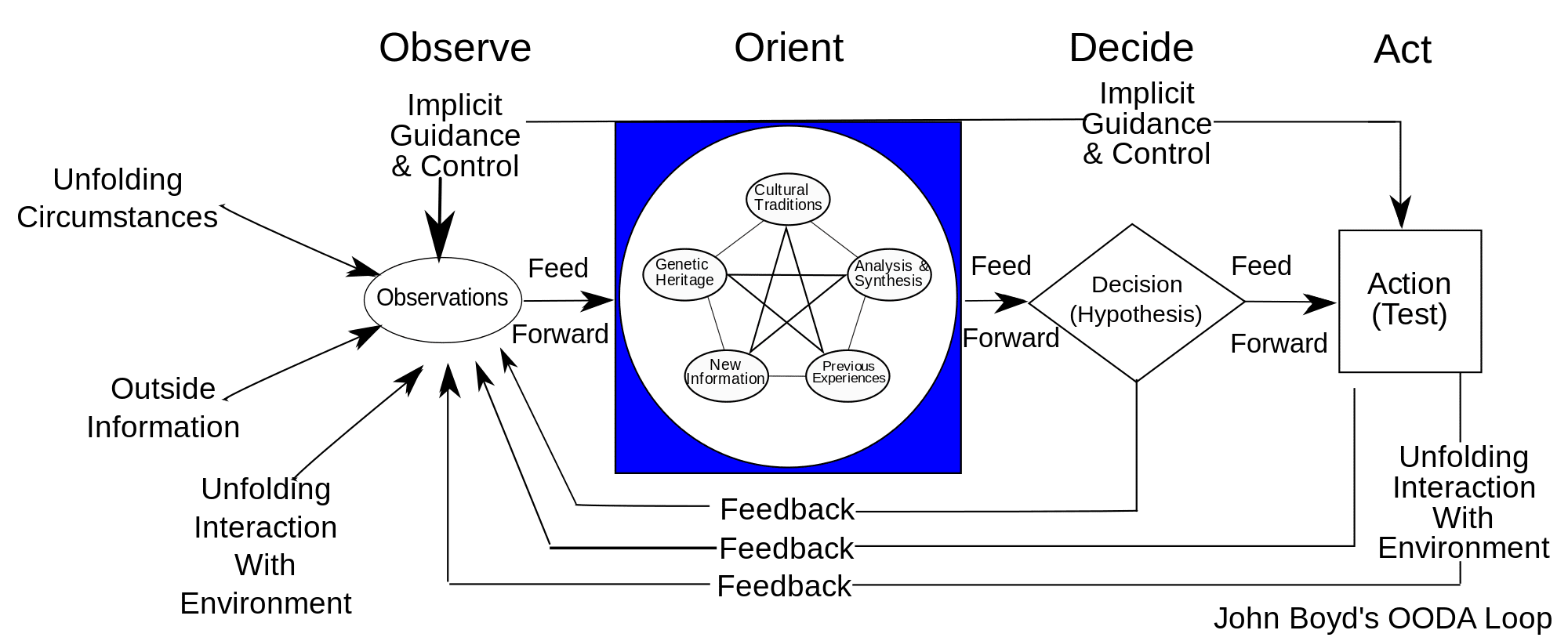The Hackers Congress Paralelní Polis 2018 Day One Round-Up

The fifth rendition of The Hackers Congress Paralelní Polis (HCPP18) opened on October 5, 2018, in Prague, Czech Republic. The three-day event welcomed a fusion of developers, artists, politicians, and activists into one cryptic-centric location to discuss the year’s theme: New Order.
Two Sides of a New Order
The opening press conference held on the first floor of the Institute of Cryptoanarchy gave audience to Panama Papers lawyer and freedom fighter Adolfo Linares and the founder of DADA Beatriz Ramos. The two helped organizers grapple with the thematic issues of emerging technologies and the ways in which they are providing novel ways to rethink current systems. Admittedly, it’s a slippery slope, but in the midst of the Czech elections happening simultaneous to the conference, the semantic discussion couldn’t have been more timely.
As a citizen of Panama and an active member of the legal and monetary community therein, Linares described the encroaching dangers of a “supra-national governing body.” Specifically, he referred to the Organisation for Economic Cooperation and Development (OECD) and the “fascist” state controls they have attempted to place on the central bank-less island country. “They can’t stand an ‘unregulated’ country like Panama,” said Linares. “They want the whole world to look like one place and for every place to be treated in the exact same way.”

Alfonso Linares and Beatriz Ramos at HCPP 2018.
Beatriz Ramos explained her New Order in the field of art and how her platform allows people to communicate with one another beyond the written word. DADA is a social media platform in which visual creatives are paid along a much different model compared to current standards. At present, Beatriz explained, “If only one or two, or maybe three, artists make a ton of money from their work, there are so many others who can’t even make a bare living from their art.” To resolve this, DADA proposes a royalty fee paid back to the artist as his or her work passes hands even beyond the first selling point.
Hardware for Lightning and Black Market Flash Drives
Up to three events ran parallel to one another. Thus the following is far from a perfect representation of all that was available at HCPP this year. Split between three main stages, the chief organizer of the conference explained that he and his team were tempted to expand to a larger venue. “At these bigger events, though, we felt that attendees lose the intimacy and communication of a smaller venue,” he said. It seems to have also helped with the scarcity of the tickets, as all were sold out within weeks of their announcement.

Studio 1 also hosted a deep dive into the potentials of a hardware wallet to combat the fallibility of the Lightning Network. To open, Dr. Stepan Snigirev, a quantum physicist now working on Bitcoin development, asked the audience, “How many of you operate a Lightning Node on the mainnet?” Eagerly, more than half of the audience raised their hand. “That freaks me out. It’s basically like yelling to the network, ‘hey guys, here’s my IP address and this is where I keep my bitcoin,’” Snigirev responded.
I will be talking about hardware wallets for lightning network at #HCPP18 !
First day, first talk! Pure architecture. https://t.co/2dZ2BqN0yg pic.twitter.com/XnGMaeuta3— Stepan Snigirev (@StepanSnigirev) September 29, 2018
The Lightning Network is far from the battle-tested mainchain upon which operates. Malicious agents, falsely broadcasted state channels, and simple human error still plague the operations of the speedy second layer. With the help of a hardware wallet by the likes of Trezor, Ledger, or Snigirev’s project CryptoAdvance in Munich, Germany, however, many of these issues could be resolved. The tricky part, however, is developing a device that continuously announces the latest commits as well as reducing the risk of a honeypot when routing payments between multiple parties. “Hardware like this would already have what Trezor or Ledger has, but it would also be able to constantly ask for the status of new blocks so that a bad actor wouldn’t be able to maliciously close out channels,” Snigirev explained.
Outside of the world of crypto, but not far from the political effects of technology, was a short presentation on Flash Drives for Freedom. The premise, explained Jim Warnock of The Human Rights Foundation, was to smuggle literature, movies, magazines, and pretty much any outside media that could fit into a flash drive into North Korea. “We used balloons at first and floated them across from the South Korean border, but it was pretty hit-or-miss,” he explained.
“It wasn’t until we started sneaking in flash drives along the 880 mile stretch of border with China that we saw a bigger uptick.”
Flash Drives for Freedom asks people to donate any of their unused flash drives which are then professionally wiped in South Korea before being curated with content. Typically, the organization works with North Korean defectors who have moved to South Korea; they are also the ones who decide what types of movies and television programs with which each drive will be filled.
Collecting Flashdrives for Freedom! #sxsw #flashdrivesforfreedom #humanrightswatch #artnocube pic.twitter.com/36L1NkJEAY
— Art no Cube (@ArtnoCube) March 14, 2017
The Life of the Real Smuggler
The final presentation of the day wrapped up in Studio 1 with an explanation of the real definition of cryptoanarchism. “Everyone calls themselves a cryptoanarchist these days like it’s something cool or it’s some kind of brand,” explained Smuggler. He then went, step-by-step, into the actual definition of anarchism, the dialectic choice of coupling this word with any other sort of Frankenstein, SEO-buzz word (anarchocapitalism, cryptoliberalism) a trendy blogger could think of in 2018. And with nearly 15 years of experience moderating darknet communities, anonymous servers, and genuinely untraceable payments (even before Monero (XMR) and Zcash (ZEC)), who’s going to argue?
Smuggler prescribed a convenient mental model for how best to understand the project of true cryptoanarchism. A clear understanding of which demands an introduction to something called an “OODA Loop” which describes a repetitive cycle of power dynamics. Otherly, it stands for Observe, Orient, Decide, and Act and was developed by the United States Air Force Colonel John Boyd.

(Source: Wikimedia)
“People generally assume that an anarchist is this person who is constantly throwing molotov cocktails at everything. These are not anarchists; this is called anomie,” he explained. More explicitly, though, a true cryptoanarchist would rarely be taking these kinds of actions in the first place. The real methodology comes from omitting the observation aspect of the OODA framework. Instead of fighting hand-to-hand, anarchy via cryptography looks to blind the controller long before any violent confrontation arises. Surrounding this are enormous implications for the way in which we spend our money, live our online lives, anonymous sharing economies, and all the way down to the way we dress.

The Real Smuggler.
To the chagrin of the audience, he also pointed out how, at current, bitcoin is doing “a pretty shit job” of concealing people’s identities. Among more than a handful of ideas native to this philosophy, Smuggler concluded with a request from the audience: “I hope next year that we this conversation, Monero and Zcash will also have gotten a lot better. Not bashing, just supporting.”
Stay tuned for tomorrow’s round-up of day two of The Hackers Congress Paralelní Polis’.












